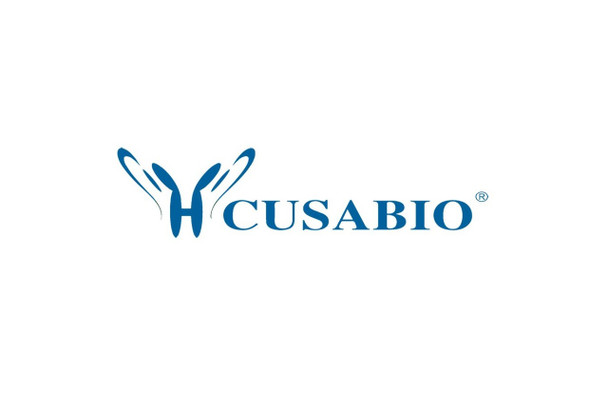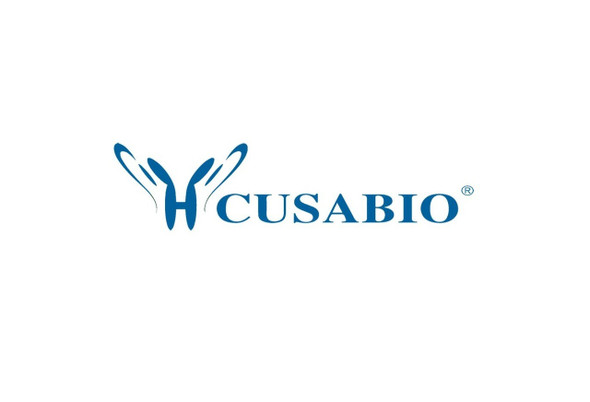Cusabio Human Recombinants
Recombinant Human Ragulator complex protein LAMTOR1 (LAMTOR1) | CSB-EP757083HU
- SKU:
- CSB-EP757083HU
- Availability:
- 3 - 7 Working Days
Description
Recombinant Human Ragulator complex protein LAMTOR1 (LAMTOR1) | CSB-EP757083HU | Cusabio
Alternative Name(s): Late endosomal/lysosomal adaptor and MAPK and MTOR activator 1 Lipid raft adaptor protein p18 Protein associated with DRMs and endosomes p27Kip1-releasing factor from RhoA Short name: p27RF-Rho
Gene Names: LAMTOR1
Research Areas: Metabolism
Organism: Homo sapiens (Human)
AA Sequence: GCCYSSENEDSDQDREERKLLLDPSSPPTKALNGAEPNYHSLPSARTDEQALLSSILAKTASNIIDVSAADSQGMEQHEYMDRARQYSTRLAVLSSSLTHWKKLPPLPSLTSQPHQVLASEPIPFSDLQQVSRIAAYAYSALSQIRVDAKEELVVQFGIP
Source: E.coli
Tag Info: N-terminal 6xHis-tagged
Expression Region: 2-161aa
Sequence Info: Full Length of Mature Protein
MW: 21.6 kDa
Purity: Greater than 90% as determined by SDS-PAGE.
Relevance: As part of the Ragulator complex it is involved in amino acid sensing and activation of mTORC1, a signaling complex promoting cell growth in response to growth factors, energy levels, and amino acids. Activated by amino acids through a mechanism involving the lysosomal V-ATPase, the Ragulator functions as a guanine nucleotide exchange factor activating the small GTPases Rag. Activated Ragulator and Rag GTPases function as a scaffold recruiting mTORC1 to lysosomes where it is in turn activated. LAMTOR1 is directly responsible for anchoring the Ragulator complex to membranes. Also required for late endosomes/lysosomes biogenesis it may regulate both the recycling of receptors through endosomes and the MAPK signaling pathway through recruitment of some of its components to late endosomes. May be involved in cholesterol homeostasis regulating LDL uptake and cholesterol release from late endosomes/lysosomes. May also play a role in RHOA activation.
Reference: "Large-scale cDNA transfection screening for genes related to cancer development and progression."Wan D., Gong Y., Qin W., Zhang P., Li J., Wei L., Zhou X., Li H., Qiu X., Zhong F., He L., Yu J., Yao G., Jiang H., Qian L., Yu Y., Shu H., Chen X. Gu J.Proc. Natl. Acad. Sci. U.S.A. 101:15724-15729(2004)
Storage: The shelf life is related to many factors, storage state, buffer ingredients, storage temperature and the stability of the protein itself. Generally, the shelf life of liquid form is 6 months at -20?/-80?. The shelf life of lyophilized form is 12 months at -20?/-80?.
Notes: Repeated freezing and thawing is not recommended. Store working aliquots at 4? for up to one week.
Function: As part of the Ragulator complex it is involved in amino acid sensing and activation of mTORC1, a signaling complex promoting cell growth in response to growth factors, energy levels, and amino acids. Activated by amino acids through a mechanism involving the lysosomal V-ATPase, the Ragulator functions as a guanine nucleotide exchange factor activating the small GTPases Rag. Activated Ragulator and Rag GTPases function as a scaffold recruiting mTORC1 to lysosomes where it is in turn activated. LAMTOR1 is directly responsible for anchoring the Ragulator complex to membranes. Also required for late endosomes/lysosomes biogenesis it may regulate both the recycling of receptors through endosomes and the MAPK signaling pathway through recruitment of some of its components to late endosomes. May be involved in cholesterol homeostasis regulating LDL uptake and cholesterol release from late endosomes/lysosomes. May also play a role in RHOA activation.
Involvement in disease:
Subcellular Location: Late endosome membrane, Lipid-anchor, Cytoplasmic side, Lysosome membrane, Lipid-anchor, Cytoplasmic side, Cell membrane
Protein Families: LAMTOR1 family
Tissue Specificity:
Paythway: mTORsignalingpathway
Form: Liquid or Lyophilized powder
Buffer: If the delivery form is liquid, the default storage buffer is Tris/PBS-based buffer, 5%-50% glycerol. If the delivery form is lyophilized powder, the buffer before lyophilization is Tris/PBS-based buffer, 6% Trehalose, pH 8.0.
Reconstitution: We recommend that this vial be briefly centrifuged prior to opening to bring the contents to the bottom. Please reconstitute protein in deionized sterile water to a concentration of 0.1-1.0 mg/mL.We recommend to add 5-50% of glycerol (final concentration) and aliquot for long-term storage at -20?/-80?. Our default final concentration of glycerol is 50%. Customers could use it as reference.
Uniprot ID: Q6IAA8
HGNC Database Link: HGNC
UniGene Database Link: UniGene
KEGG Database Link: KEGG
STRING Database Link: STRING
OMIM Database Link: OMIM









